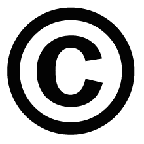 Let’s start by defining copyright. A copyright is “a form of protection provided by the laws of the United States to the authors of ‘original works of authorship,’ including literary, dramatic, musical, artistic and certain other intellectual works.
Let’s start by defining copyright. A copyright is “a form of protection provided by the laws of the United States to the authors of ‘original works of authorship,’ including literary, dramatic, musical, artistic and certain other intellectual works.
This protection is available to both published and unpublished works.” It basically states the ownership of a work of art belongs to the person who created it. A work that is eligible for copyright would be: (a) any single work or (b) a collection of unpublished works by the same author and owned by the same claimant, or (c) multiple published works contained in the same unit of publication and owned by the same claimant. (Examples. a compact disc containing 10 songs; a book of poems). B or C can be filed with a single registration application. All you have to do to get started is create something! After you’ve used those creative ideas to produce something great, the next step is to start the registration process. You can do so online. Filing online will give you access to a lower filing fee of only $35. According to copyright.gov half of online filers who upload an electronic deposit copy should receive a certificate within three and one-half months, while most should receive a certificate within four and one-half months. The forms for mailing your copyright registration application are not provided on copyright.gov’s Web site, but can be requested through an online form and will be sent to you to mail back.










No comments yet.